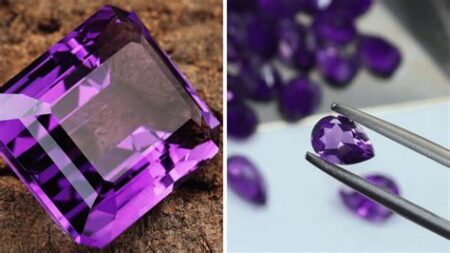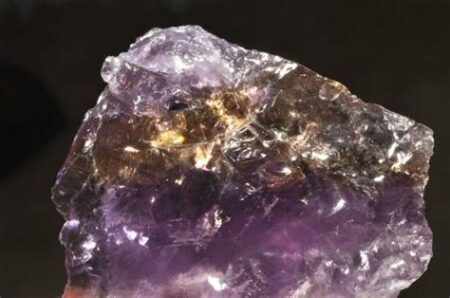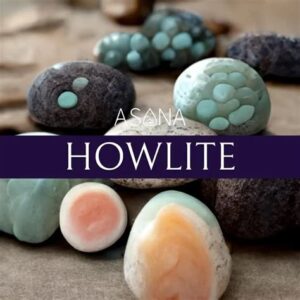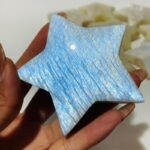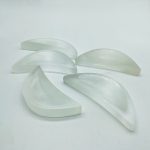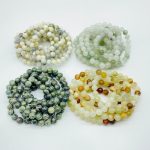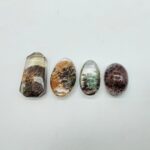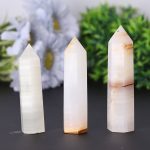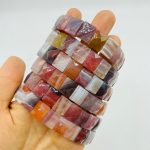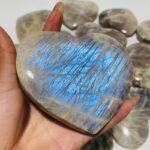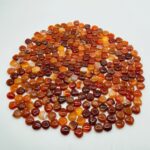Indulge in the enchanting world of blue rock minerals, a captivating symphony of nature that has mesmerized humans for centuries. From the ethereal lapis lazuli to the vibrant turquoise, these captivating stones possess a unique allure that transcends the mundane. Join us on a journey into the depths of blue rock minerals, where we uncover their mesmerizing qualities, fascinating history, and endless possibilities for wonder.
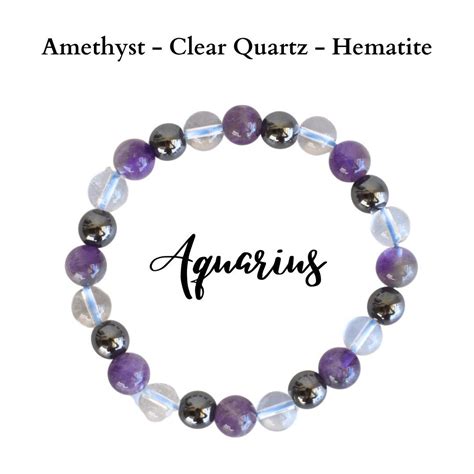
The Allure of Azurite
Azurite, a deep azure mineral, embodies the essence of the sky. Its vibrant hue, resembling the Mediterranean Sea on a radiant summer day, has captivated artists and artisans for ages. This opaque stone, composed primarily of copper carbonate, is often adorned with intricate crystalline patterns, further enhancing its beauty.
Azurite has been treasured since ancient times, adorning garments of Egyptian pharaohs and inspiring the deep blue pigments used in medieval illuminations. Its alluring color has also made it a sought-after material for decorative purposes, from intricate jewelry to exquisite sculptures.
The Serenity of Lapis Lazuli
Lapis lazuli, a mystical blue rock mineral, has enthralled civilizations for millennia. Its deep, heavenly hue, reminiscent of the starry night sky, has been revered for its supposed connection to the divine. This opaque to semi-transparent mineral is composed of lazurite, calcite, and pyrite, resulting in a captivating interplay of colors and textures.
Ancient civilizations prized lapis lazuli, using it to create stunning jewelry, amulets, and sacred objects. The Egyptians believed lapis lazuli to be a symbol of truth and justice, and they adorned the tombs of pharaohs with this precious stone. Centuries later, lapis lazuli found its way into the hands of European artists, who used it to create breathtaking masterpieces.
The Vibrance of Turquoise
Turquoise, a mesmerizing blue rock mineral, embodies the tranquil waters of a crystal-clear lagoon. Its opaque to translucent hue, ranging from sky blue to a deep, alluring green, has captivated cultures throughout history. Composed primarily of copper and aluminum phosphate, turquoise often exhibits a beautiful matrix of black or brown veins, enhancing its captivating beauty.
Turquoise has long been associated with protection, healing, and tranquility. Native American tribes have adorned themselves with turquoise jewelry for centuries, believing it to possess spiritual powers. Its vibrant color has also made it a popular choice for fashion and decorative purposes, from vibrant necklaces to stunning inlays.
The Sparkle of Kyanite
Kyanite, a captivating blue rock mineral, displays a unique fibrous structure that sets it apart. Its deep, sapphire-like hue is reminiscent of the vast, tranquil oceans. Composed primarily of aluminum silicate, kyanite often exhibits a stunning chatoyancy, an optical phenomenon that causes a cat’s eye effect.
Kyanite has found a special place in the hearts of healers and spiritualists. It is believed to possess the ability to align the chakras, promote communication, and enhance intuition. Its striking beauty has also made it a popular choice for jewelry, from elegant necklaces to captivating earrings.
The Promise of Blue Rock Minerals
Beyond their captivating beauty, blue rock minerals hold immense promise for the future. Their unique properties and compositions have inspired researchers and innovators to explore their potential in various applications.
One exciting area of research involves the use of blue rock minerals in energy storage. Scientists are investigating the ability of these minerals to store electrical energy, offering the potential for efficient and sustainable energy solutions.
Blue rock minerals are also being explored for their potential in electronics. Their semiconducting properties could lead to advancements in microelectronics, sensors, and other cutting-edge technologies.
Tips and Tricks for Using Blue Rock Minerals
-
Choose the right mineral: Each blue rock mineral has unique properties and applications. Consider the desired hue, opacity, and specific qualities before making a selection.
-
Handle with care: Blue rock minerals are typically fragile and should be handled with care. Avoid excessive heat and direct sunlight to prevent damage.
-
Protect from chemicals: Blue rock minerals are sensitive to certain chemicals, including acids and alkalis. Avoid exposing them to harsh cleaning agents or chemicals that could damage their surface.
-
Store properly: Store blue rock minerals in a cool, dry place away from moisture and direct sunlight. This will help preserve their beauty and prevent fading over time.
-
Clean gently: Use a soft, damp cloth to clean blue rock minerals. Avoid using harsh detergents or abrasive cleaners that could damage their surface.
Common Mistakes to Avoid
-
Assuming all blue rock minerals are the same: Blue rock minerals vary in composition, properties, and applications. Don’t assume that they are interchangeable without considering their specific characteristics.
-
Overexposing to sunlight: Direct sunlight can fade or damage blue rock minerals over time. Limit their exposure to protect their color and integrity.
-
Using harsh cleaning agents: Harsh chemicals can damage the surface of blue rock minerals. Use gentle, pH-neutral cleaners instead.
-
Storing improperly: Improper storage can lead to fading, discoloration, or damage to blue rock minerals. Ensure they are stored in a cool, dry place away from moisture and direct sunlight.
-
Over-polishing: Excessive polishing can damage the surface of blue rock minerals. Polish them sparingly to maintain their natural luster.
Tables for Your Reference
Table 1: Chemical Composition of Blue Rock Minerals
| Mineral | Chemical Composition |
|---|---|
| Azurite | Copper carbonate (Cu3(CO3)2(OH)2) |
| Lapis Lazuli | Lazurite (Na3Al3Si3O9S), calcite, pyrite |
| Turquoise | Copper aluminum phosphate (CuAl6(PO4)4(OH)8·4H2O) |
| Kyanite | Aluminum silicate (Al2SiO5) |
Table 2: Physical Properties of Blue Rock Minerals
| Mineral | Hardness (Mohs scale) | Specific Gravity |
|---|---|---|
| Azurite | 3.5-4.0 | 3.7-3.9 |
| Lapis Lazuli | 5.0-6.0 | 2.7-3.0 |
| Turquoise | 5.0-6.0 | 2.6-2.8 |
| Kyanite | 4.5-5.0 | 3.5-3.7 |
Table 3: Applications of Blue Rock Minerals
| Mineral | Applications |
|---|---|
| Azurite | Jewelry, decorative items, pigments |
| Lapis Lazuli | Jewelry, sculptures, pigments |
| Turquoise | Jewelry, ornamental objects, healing therapies |
| Kyanite | Jewelry, optical components, ceramics |
Table 4: Healing Properties Associated with Blue Rock Minerals
| Mineral | Associated Healing Properties |
|---|---|
| Azurite | Communication, spiritual enlightenment, stress relief |
| Lapis Lazuli | Intuition, self-expression, emotional balance |
| Turquoise | Protection, healing, emotional well-being |
| Kyanite | Alignment of chakras, communication, intuition |

